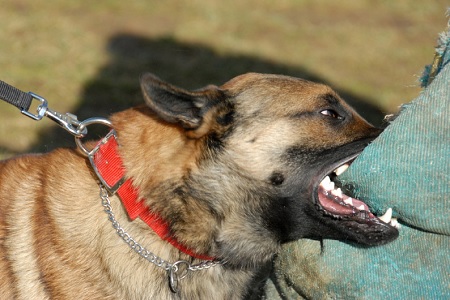A well-behaved dog is unlikely to attack another dog or a stranger. However, it can happen, especially for guard dogs that live in gardens and farms, that poor unfortunates are bitten or even attacked by one or more dogs. What does the law say about it?
One of the most frequent situations is that of the daily walk. We are walking around quietly with our dog, when suddenly from a distance we see another angry dog coming towards us, also without a leash, pointing right at us.
In these cases, we can do very little to prevent our dog from being attacked. Our instinct immediately drives us to throw ourselves into the fray to try to separate them. That’s exactly how we take a good bite too.
If we are lucky, the owner can offer to accompany us to the emergency room and our dog to the vet, and paying all the expenses.
Unfortunately, this does not always happen. The most frequent cases are those in which the owners of the "biting" dogs deny any responsibility and run away without thinking twice.
What not everyone knows, however, is that when a dog bites us or our pet, the owner of the "biting" animal is entirely responsible for the damage caused by his dog. In fact, according to art. 2052 of the Civil Code, "The owner of an animal or whoever has it for the time in which it is in walking or outside, is responsible for the damage caused by the animal, whether it was in its custody, whether it was lost or escaped" .
This ruling is no exception even for dogs kept on a leash or in any case, for owners who have tried in every way to stop their pet.

Furthermore, in the event that the attacked person should also accuse severe trauma, a common event especially in children, the parents or interested parties would have the opportunity to resort to lawyers to be compensated for any psychological expenses.
After the bite, the attacked person can go to the nearest emergency room, where standard procedures will be activated that will be used to assess the psychological and health status of the animal. The owner must ascertain the vaccinations to which his dog has been subjected, and, if necessary, precautions will be taken to assess the absence of communicable infectious diseases.
A form is then issued by the first aid staff, showing the data relating to the person attacked, the "biting" dog and the circumstances in which the episode occurred. One part of the form is sent to the local health service, while another part is delivered to the attacked person, who may decide whether or not to pursue a complaint against the owner of the attacking dog.
In view of this legislation, therefore, a good solution could be to insure your dog, to be adequately covered in case of bites or aggression towards other animals or other people. Of course, this should not overshadow a good education.










